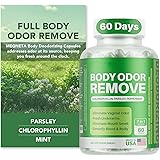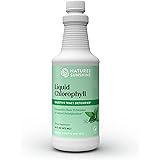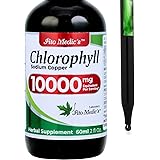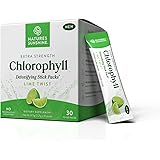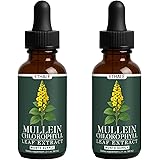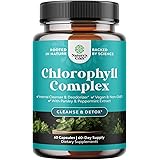The remarkable health benefits of Epsom salt for seniors, particularly concerning common age-related discomforts, are often overlooked. As comprehensively explored in the video above, this mineral compound offers a spectrum of therapeutic applications. Understanding the profound biochemical interactions of magnesium sulfate with the human body is paramount for optimizing its healing potential and improving overall well-being in older adults.
Understanding Epsom Salt: More Than Just a Salt
Epsom salt, technically known as magnesium sulfate, represents a natural mineral compound rather than a dietary salt. For centuries, this substance has been revered as a healing remedy, with its therapeutic properties first noted over 400 years ago in the English village of Epsom. When dissolved in warm water, these crystals dissociate into magnesium and sulfate ions, which are readily absorbed by the body.
Magnesium is an essential electrolyte involved in more than 300 enzymatic reactions throughout the body, influencing everything from muscle contraction to neurotransmitter function. Unfortunately, magnesium deficiency is particularly prevalent among individuals over the age of 60. This deficiency can manifest as muscle tightness, nerve signal misfires, persistent fatigue, and difficulty sleeping.
Sulfate, conversely, provides vital support for detoxification pathways, assisting the body in efficiently processing and eliminating waste products. Furthermore, sulfate plays a crucial role in the formation of proteins, thereby contributing to tissue repair and cellular recovery. Together, magnesium and sulfate create a potent natural recovery system, enhancing the body’s capacity to heal and maintain optimal function.
Targeted Benefits of Epsom Salt for Seniors
The strategic use of Epsom salt can mitigate several health challenges frequently encountered by seniors. Each application is underpinned by the unique properties of magnesium and sulfate, particularly when combined with the therapeutic effects of warm water.
1. Easing Sore Muscles and Joints
Chronic pain in muscles and joints is often a direct consequence of systemic inflammation, which tends to increase with age. Conditions such as arthritis, generalized stiffness, and persistent muscle pain become increasingly common after 60 due to a diminished capacity to manage inflammatory responses. Magnesium sulfate offers significant relief in these scenarios.
Magnesium has been shown to modulate pain signals and reduce inflammation, which are primary drivers of chronic discomfort. A notable clinical study conducted in Indonesia demonstrated that a magnesium gel, even at a modest 3% concentration, performed almost as effectively as a common anti-inflammatory drug, Dioanac, in alleviating joint pain. Furthermore, prominent health organizations such as the Mayo Clinic acknowledge magnesium sulfate soaks as a safe and effective remedy for muscle soreness, sprains, and general stiffness. The warmth from a soak also enhances blood flow, facilitating tissue repair and recovery.
2. Relieving Constipation Safely
Constipation is a prevalent and often debilitating issue among older adults, leading to discomfort, bloating, and even impaired cognitive function. While dietary fiber and adequate hydration remain foundational, Epsom salt can provide rapid, temporary relief. When consumed orally, magnesium sulfate acts as an osmotic laxative.
This mechanism involves magnesium drawing water into the intestines, effectively softening stools and promoting easier bowel movements. This effect typically occurs within 30 minutes to six hours, demonstrating its quick efficacy. The U.S. National Library of Medicine recognizes magnesium sulfate as a reliable agent for relieving acute constipation and for bowel cleansing prior to medical procedures. However, it is crucial to emphasize that oral ingestion should be infrequent and undertaken strictly under medical supervision, especially for seniors, given the risks of diarrhea, dehydration, and electrolyte imbalances.
3. Reducing Stress and Enhancing Sleep Quality
One of the most pervasive challenges for seniors is managing stress and achieving restful sleep. Sleep disturbances, including difficulty falling asleep, frequent awakenings, and unrefreshing rest, are common. Magnesium plays an indispensable role in regulating sleep architecture.
This mineral assists in the production of melatonin, the hormone that signals the body to prepare for sleep, while simultaneously reducing cortisol, the primary stress hormone that keeps the brain alert. Moreover, magnesium facilitates muscle relaxation, allowing the body to release physical tension. Research indicates that magnesium supplementation can improve sleep onset, duration, and overall quality in elderly individuals. Soaking in an Epsom salt bath before bed facilitates transdermal magnesium absorption, which helps to calm the nervous system and promote a profound sense of peace, contributing to deeper and more restorative sleep.
4. Natural Skin Exfoliation and Soothing
As individuals age, skin often becomes drier, rougher, and more susceptible to irritation. Epsom salt serves as a gentle yet effective natural exfoliant and skin conditioner. When used topically, either as a rinse or a compress, magnesium sulfate helps to remove dead skin cells, clear pores, and soften rough patches without stripping the skin’s natural barrier.
Magnesium contributes to regulating inflammation and oxidative stress, both of which are significant contributors to various skin conditions and premature aging. A 2017 study published in Scientific Reports indicated that magnesium salts positively influence skin hydration and reduce dermal inflammation. The sulfate component further aids in detoxification by drawing out impurities that can clog pores and exacerbate sensitive skin. This combination results in a calming and cleansing effect, supporting healthy cell turnover and enhancing the absorption of moisturizers.
5. Alleviating Knee Pain and Water Retention
Knee pain and water retention, or edema, frequently co-occur as age progresses, exacerbating discomfort and limiting mobility. Swelling in the lower legs adds significant pressure, making movement difficult. Immersing the legs in warm water infused with 50 to 100 grams of Epsom salt can provide substantial relief.
The warm water stimulates blood flow and relaxes connective tissues, reducing tension. Concurrently, magnesium may assist in osmotically drawing out retained fluids through the skin while also easing muscle tightness in the surrounding areas. Clinical observations suggest that consistent use of these soaks can enhance mobility and lessen the sensation of heaviness and stiffness. This simple, affordable practice, typically performed for 15 to 20 minutes once or twice weekly, can significantly alleviate pressure and restore comfort in the lower extremities.
6. Eliminating Foot Odor
Foot odor, often an embarrassing issue, signals the proliferation of bacteria in warm, moist environments on the skin. For seniors, altered circulation and sweat regulation can create an ideal breeding ground for odor-causing microbes, such as *Corynebacterium*. An Epsom salt foot soak can effectively disrupt this cycle.
Dissolving approximately half a cup of Epsom salt in a basin of warm water and soaking the feet for 15 to 20 minutes offers a dual benefit. Firstly, the salt helps to draw out excess moisture from the skin, creating a less hospitable environment for bacterial growth. Secondly, while Epsom salt is not a direct disinfectant, it effectively reduces the conditions under which these microbes thrive, thereby mitigating odor naturally. Thoroughly drying the feet, especially between the toes, after each soak is crucial to prevent the resurgence of dampness and bacterial activity.
7. Supporting Sports Recovery and Post-Surgery Healing
Recovery from intense physical exertion or surgical procedures necessitates robust bodily support for optimal healing. After strenuous activity, muscles often experience delayed onset muscle soreness (DOMS), characterized by tightness and fatigue due to micro-tears in muscle fibers. Post-surgery, challenges include inflammation, stiffness, and discomfort. Epsom salt, or magnesium sulfate, offers multifaceted support in both scenarios.
For decades, Epsom salt has been utilized in sports therapy and rehabilitation to relax muscles, reduce inflammation, and assist in electrolyte balance. The warmth of a soak increases blood flow, which aids in flushing out metabolic waste products like lactic acid that contribute to stiffness. Magnesium, in turn, promotes muscle relaxation, mitigating spasms and cramps. For individuals recovering from orthopedic procedures, gentle Epsom salt soaks, once wounds are closed, can help reduce puffiness and improve mobility. Beyond the physical, magnesium also supports the nervous system, reducing cortisol levels and promoting relaxation, which is vital for mental recovery and better sleep during healing periods.
8. Combating Infections and Healing Cracked Heels
Cracked heels, though seemingly minor, present open pathways for bacterial and fungal ingress, posing a particular risk for seniors due to thinner, drier skin and slower immune responses. Epsom salt soaks provide targeted support, addressing inflammation, softening hardened skin, and creating an unfavorable environment for harmful microbes.
Magnesium from the salt helps to calm inflamed or irritated skin, reducing discomfort and redness. The warm soak also softens rough calluses, facilitating the shedding of dead skin layers and initiating the healing process. Furthermore, Epsom salt helps to extract excess moisture and gently exfoliates, thereby disrupting the hidden havens where fungal infections often flourish. While not an antibiotic, magnesium sulfate may diminish bacterial activity and bolster the skin’s natural defense mechanisms. A dermatology review highlighted that mineral salts like Epsom salt can restore the skin’s ionic balance, thereby strengthening its protective barrier and accelerating repair.
9. Eliminating Foot Cramps
Nocturnal foot and calf cramps are a common and intensely painful experience for many seniors, frequently disrupting sleep. Several physiological factors contribute to their increased incidence with age, including declining magnesium levels, reduced absorption efficiency, slower circulation to the lower legs, and electrolyte imbalances.
Magnesium is instrumental in regulating nerve impulses and controlling muscle contractions. While much research on cramp prevention focuses on oral supplements, emerging studies suggest that soaking in magnesium-rich water, such as an Epsom salt bath, can also provide relief. The warmth of the water itself enhances circulation, relaxes muscle fibers, and helps to eliminate lactic acid, a known trigger for spasms. This synergistic effect addresses both the symptoms and the underlying causes, potentially reducing the frequency and severity of nighttime cramps.
10. Improving Circulation in Cold Feet and Hands
Reduced blood flow to the extremities, a common age-related phenomenon, often results in cold, stiff, or numb hands and feet, particularly at night or in colder weather. This discomfort can impair sleep and overall mobility. Soaking in warm water with Epsom salt can effectively enhance circulation through two primary mechanisms.
The heat itself causes blood vessels to dilate, promoting increased blood flow. Concurrently, magnesium supports the flexibility of blood vessels and helps relax surrounding tissues, further facilitating circulation. For many older adults, this simple, warming routine provides substantial comfort, naturally improving blood flow and alleviating the sensation of coldness in the extremities.
Optimal Usage and Important Precautions for Seniors
Achieving tangible results from Epsom salt hinges on its correct and consistent application, which does not necessitate specialized equipment. For relief in feet or legs, a basin filled with warm water to cover the ankles, or even the knees for swelling or joint pain, is recommended. Incorporate approximately half to one cup of Epsom salt, ensure it is fully dissolved, and soak for 15 to 20 minutes to effectively ease cramps, reduce pressure, and relax tired legs.
For a more comprehensive full-body therapeutic experience, add two cups of Epsom salt to a warm bath and immerse yourself for 15 to 20 minutes. This method supports deeper sleep, improves circulation, and aids overall bodily rejuvenation. For skin care and gentle exfoliation, a small spoonful of Epsom salt dissolved in warm water can be applied using a soft cloth to areas such as the face, elbows, or heels. This practice helps to lift dead skin, calm irritation, and support skin healing, always followed by a moisturizer to lock in hydration.
Several critical precautions must be observed, especially for seniors. Always use warm, never hot, water, particularly if conditions like diabetes, sensitive skin, or circulation problems are present. Oral consumption of Epsom salt should strictly be under direct medical guidance and for specific purposes like acute constipation. Overuse should be avoided, with a frequency of two to three times per week generally considered sufficient. Following each soak, it is important to thoroughly dry the skin, moisturize, and consume a full glass of water for rehydration. Individuals with open wounds, active infections, or pre-existing kidney conditions must consult their physician before using Epsom salt due to potential complications.


